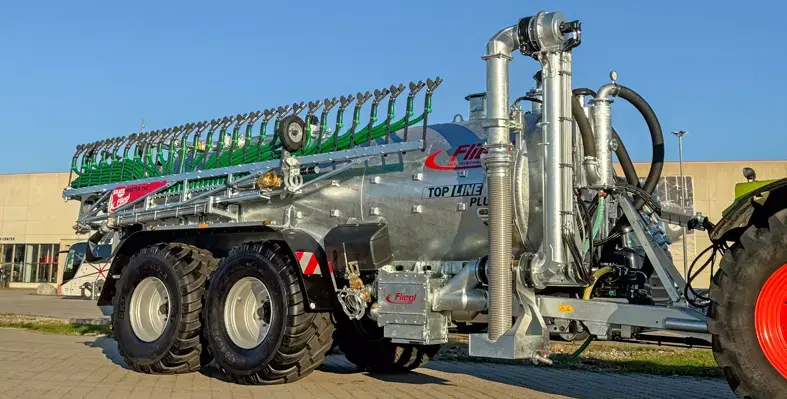
The stainless stell lift provides an efficient and safe way to move raw materials and products within a hygienic production environment. (Image source: Dinnissen)
This innovative stainless steel lift saves space, accelerates work processes, and minimises safety risks through automated, safe vertical movement of raw materials and goods
Designed to meet strict hygienic standards and made entirely of stainless steel, the lift guarantees full reliability. The idea for the stainless steel lift emerged during a project in the United States. Dinnissen built two mixing lines there for a major multinational in dietary supplements (collagen powder). During this project, Dinnissen specialists Frans Bakker and Melvin van Hilst noticed that the design was not sufficiently safe. Pallets with raw materials had to be placed on a platform at a height of 8 meters, which involved significant risks. Back in the Netherlands, they decided to develop a safer solution together: a lift to safely elevate the pallets with raw materials.
The idea was immediately well received by the client. They searched for a supplier capable of delivering fully stainless steel lifts without hydraulics, due to stringent hygienic requirements. However, the search brought no outcome. When it became clear that no suitable supplier could be found, Dinnissen decided to design and build the lifts themselves, fully tailored to the client’s needs.
The stainless steel lift for pallets, IBCs, and FIBCs provides an efficient and safe way to move raw materials and products within a hygienic production environment. This innovative system meets the strict hygiene standards of the food industry, saves space, ensures safety, and accelerates work processes.
The lift’s design is fully aligned with the highest safety and hygiene standards, with stainless steel as the primary material. Stainless steel is not only corrosion-resistant but also easy to clean, minimizing the risk of contamination. Moreover, the stainless steel lift is highly versatile: it can easily handle various product types, including pallets, drums, big bags, and sack goods.
Dinnissen has further enhanced the lift’s safety by opting for a mechanical belt drive instead of hydraulics. This not only improves hygiene but also makes the system more reliable and durable. Additionally, the lifts comply with safety standards, such as CE certification, thanks to collaboration with the Liftinstituut in The Netherlands. This partnership ensures compliance and safe operation in industrial environments. The fully stainless steel lift features its own control system, including LOTO provisions and fall protection, to ensure maximum safety. Everything is fully compliant with the EN 81-30:2010 regulations.
Dinnissen designs the stainless steel lift entirely according to the specific requirements of the customer. This includes considerations such as height, capacity, or the specific configuration of input and output routes. Dinnissen ensures that the lift seamlessly integrates into the production process. The lifts can be built in various heights and have a lifting capacity ranging from 500 to 2000 kg.
Dinnissen has already built several stainless steel lifts and is currently producing multiple units for various customers.








